If you’ve never had the pleasure of enjoying Pernil, you don’t know what you’re missing! Tender, juicy, and incredibly flavorful, this marinated pork roast is guaranteed to become a family favorite!
Traditionally a Christmas dish in Latin American households, our Puerto Rican Roast Pork is easy to make and perfect for holiday dinners, celebrations, family get-togethers, or game days.
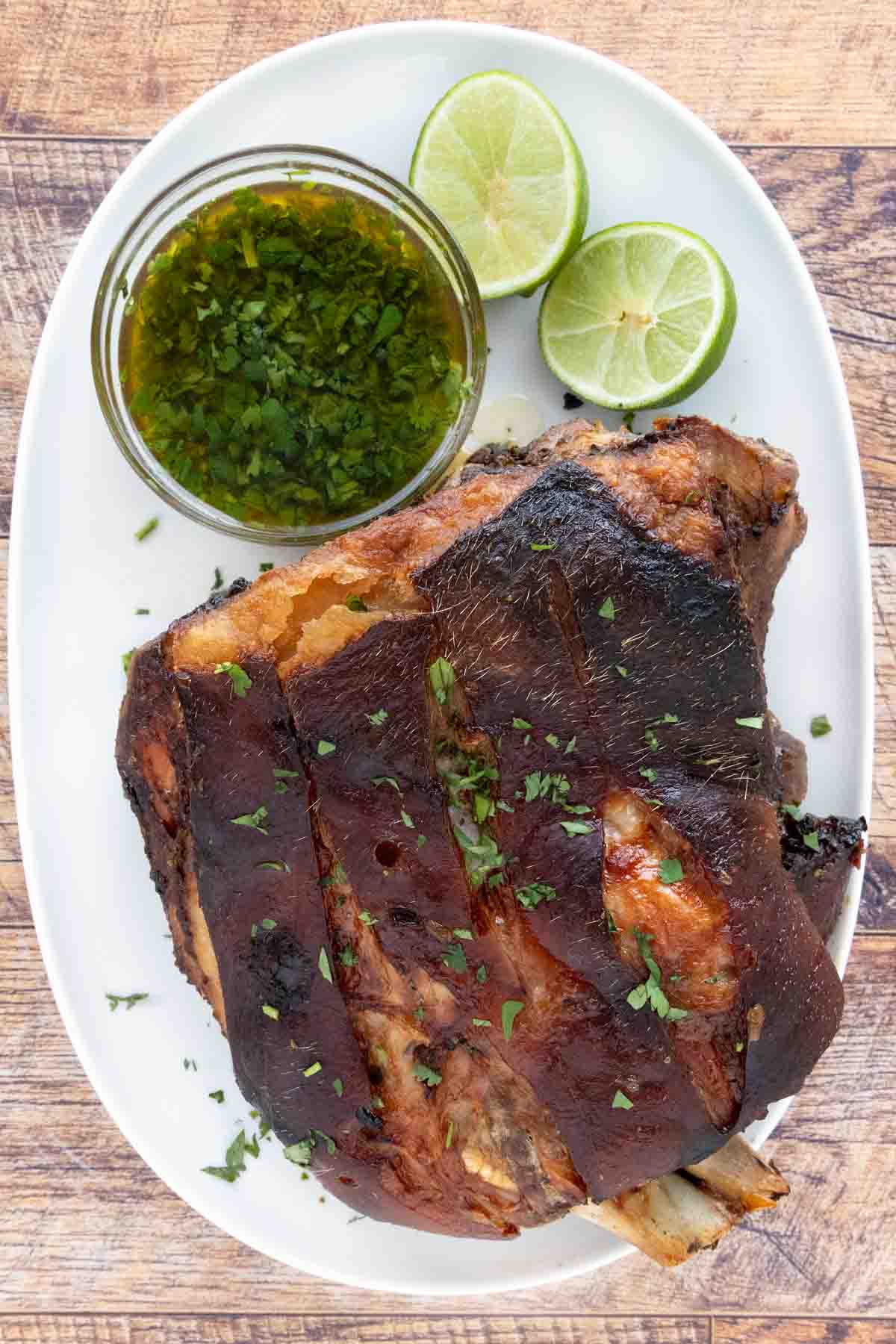
I was lucky enough to try this delicious roast pork shoulder (aka Pernil Asado) on a trip to Puerto Rico a few years ago, and it was love at first bite.

I’ve recreated this staple of Puerto Rican Cuisine and couldn’t have been happier with the results. The tender meat of our Puerto Rican Pernil was, without a doubt, the best pulled pork I’ve ever tasted.
Trust me when I tell you that this slow-roasted pork needs to be on your home menu rotation.
If you love delicious pork dishes, try my Oven Roasted Pulled Pork and Oven Roasted Pork Loin recipes.
Ingredients to make Pernil (Puerto Rican Pork Roast)

Let’s start by gathering the ingredients we need to make our Pernil recipe. In Chef Speak, this is called the Mise en Place, which translates into Everything in its Place.
Not only does setting your ingredients up ahead of time speed the cooking process, but it also helps ensure you have everything you need to make the dish.
How to make Pernil (Puerto Rican Pork Roast)

- Add the sofrito, dried oregano, garlic powder, coriander, onion powder, cumin, salt, and black pepper to a large bowl.
- Add the olive oil to the spice rub and mix well. Set aside until needed.
- Use a sharp knife to cut slits all around the pork roast.
- Stuff the slits with slices of fresh garlic cloves.
- Rub the pork shoulder with the prepared marinade.
- Cover with plastic wrap and refrigerate for at least 4 hours. Overnight is best, as it gives the marinade time to penetrate the roast.
Preheat the oven to 300 degrees F. Let the Pernil sit out while the oven preheats, allowing it to begin to come to room temperature before roasting.
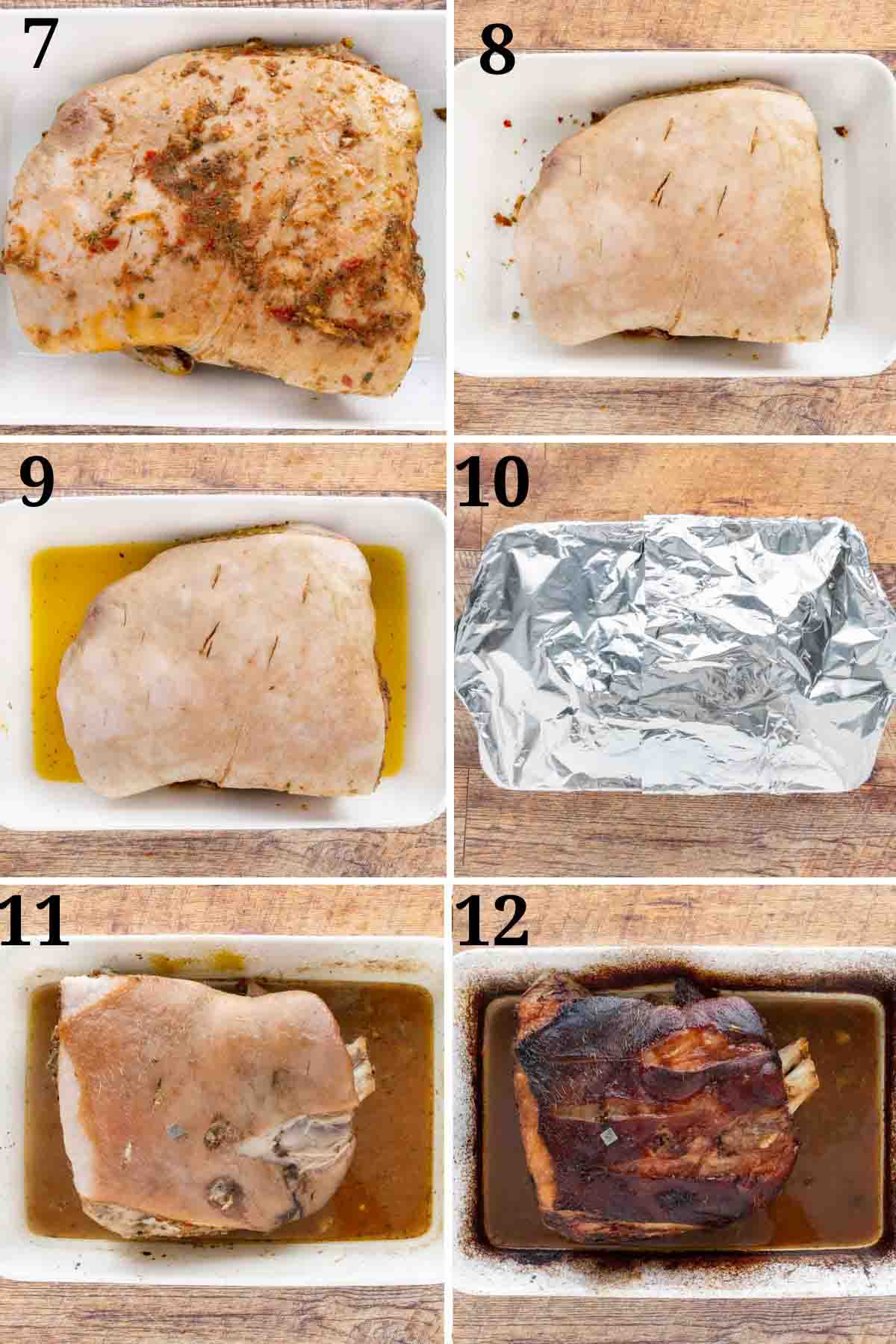
- Place the marinated pork shoulder in a large roasting pan or large baking dish, skin side up.
- Use paper towels to wipe the skin clean of marinade and excess moisture. Drying the skin will allow it to crisp up..
- Pour the orange juice, lime juice, and water into the bottom of the pan.
- Cover the pan tightly with aluminum foil, leaving no openings.
- Place the roast on the center rack of the preheated oven and roast for 3 hours.
- Increase the oven temperature to 400 degrees F. Remove the foil, and pat the skin dry with a paper towel.
*If the bottom of the pan is dry or does not have enough liquid, add more water, orange juice, and lime juice. - Return the roast to the oven and continue cooking for 1-2 hours or until the pork’s internal temperature reaches 205- 210 degrees F. (Use a meat thermometer or instant-read thermometer to ensure you hit the correct temperature range.)
- Remove the roast from the oven and let it rest for 20 minutes before pulling the meat, allowing the juices to redistribute throughout the roast pork.
*The skin should be nice and crispy, but if you prefer crispier skin, increase the oven temperature to 500 degrees F and roast for an additional 10 minutes or until the skin is browned and extra crispy.
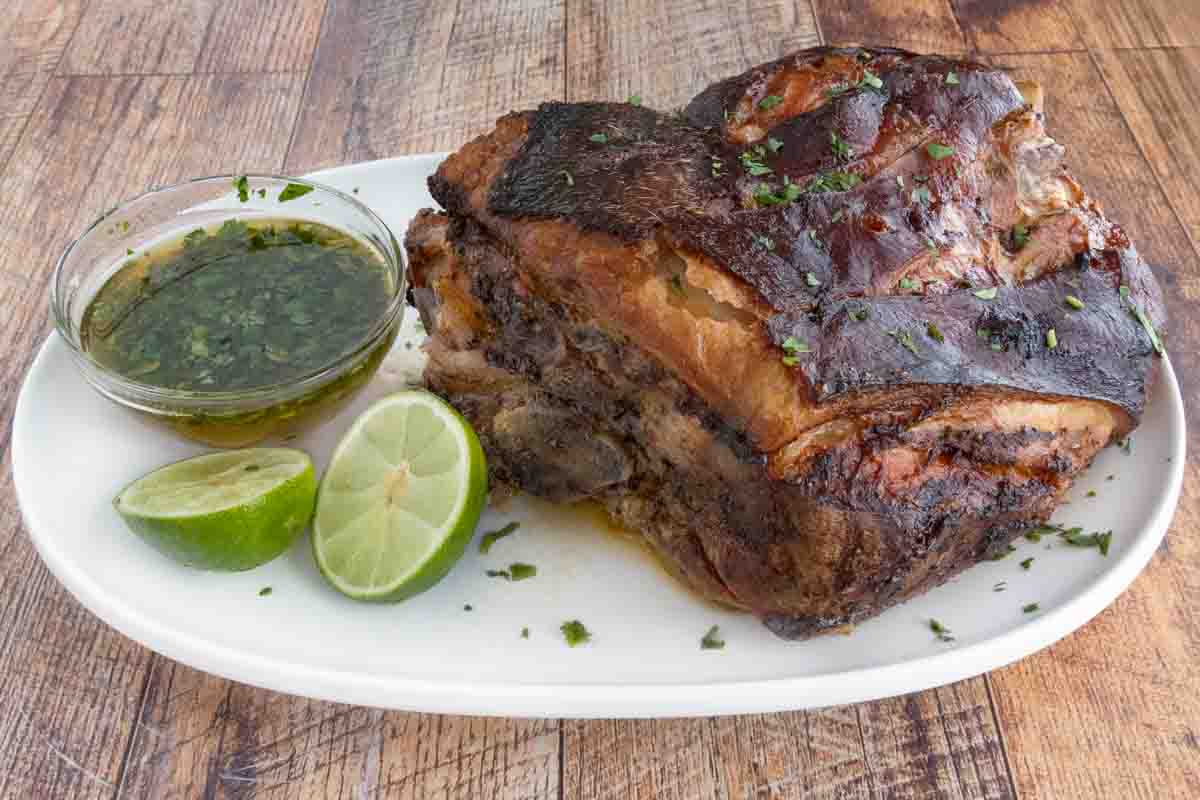
When the Pernil has cooled, remove the crispy skin (chicharrón or cuero) and cut the pork rind into crispy pieces. Then, pull the juicy meat into large chunks, which are perfect for dipping or sandwiches.
I promise this will be the best Pernil you’ve ever tasted outside of Puerto Rico!
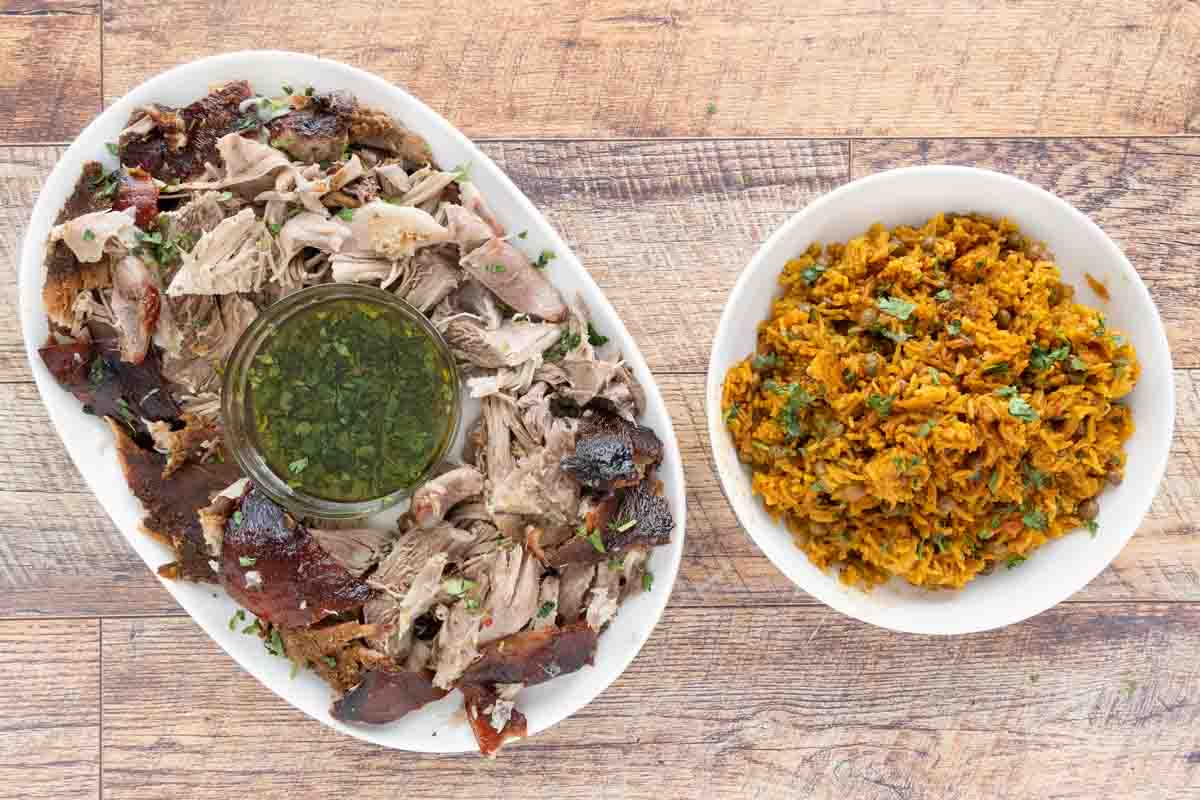
Serve the pernil with arroz con grandules (rice with pigeon peas) and a green sauce for a traditional Puerto Rican dinner.
Save leftovers refrigerated in an airtight container for 4-5 days. It can also be frozen in a ziplock bag or freezer-safe container for up to 3 months.
Recipe FAQ’s
The word “pernil” is derived from the Spanish word “pierna” or leg. It’s also the Catalan word for ham, or in this case, a fresh ham (aka pork roast). Pork shoulder is usually used for this dish due to it being readily available and affordable, but other pork roasts can be used.
Pernil is traditionally made with a bone-in, skin-on pork shoulder (often referred to as “picnic shoulder” or “picnic roast.”). It has a good amount of fat and a bit more connective tissue, which makes it perfect for cooking low and slow.
You can also use a Boston butt or pork leg to make this recipe.
Yes, leave the skin on. The skin becomes crispy, crunchy, and flavorful when roasted, creating the delicious crispy skin known as “chicharrón or cuerito”.
If you can’t find a skin-on pork roast, you can still make pernil, but you won’t get the crispy skin to enjoy.

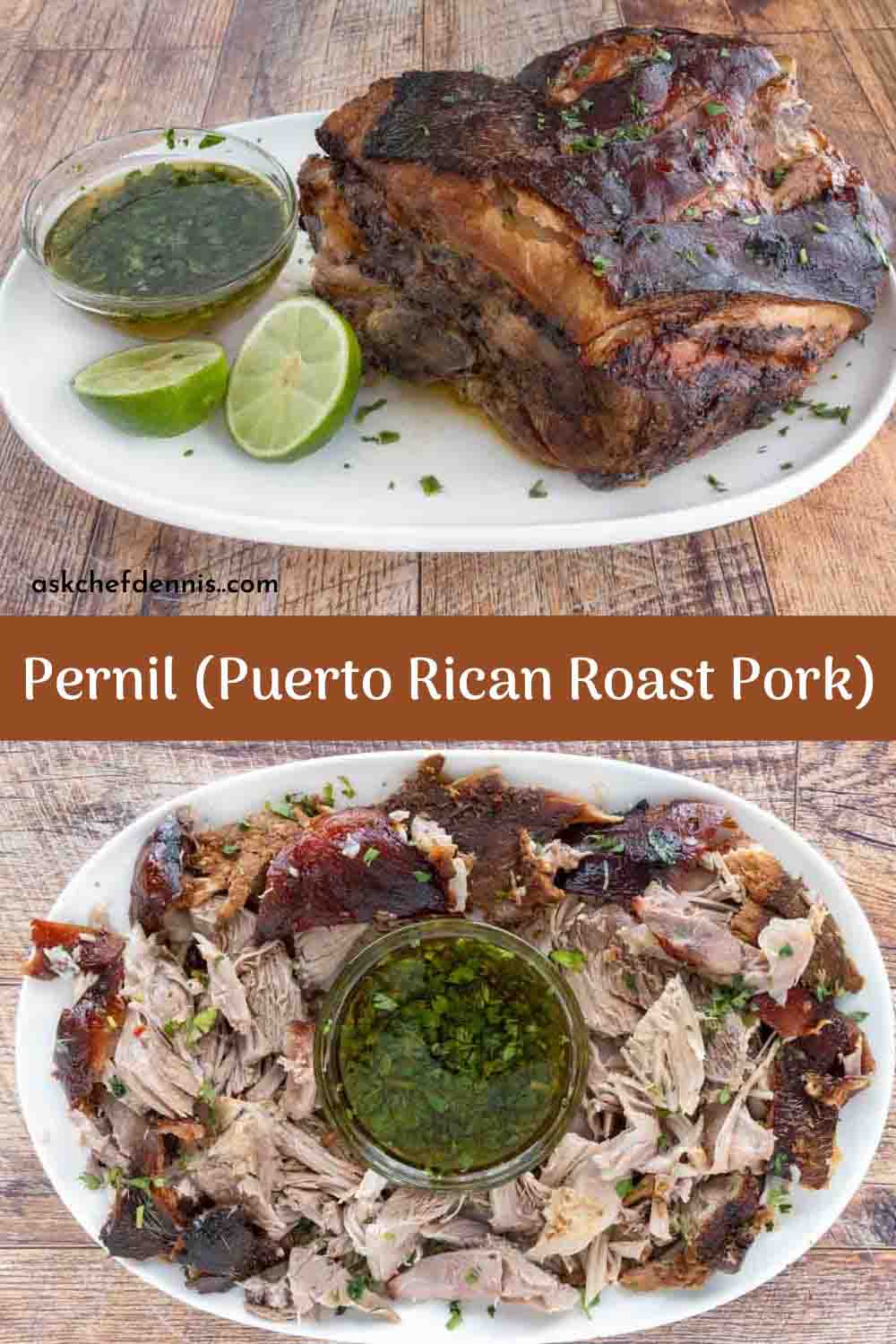
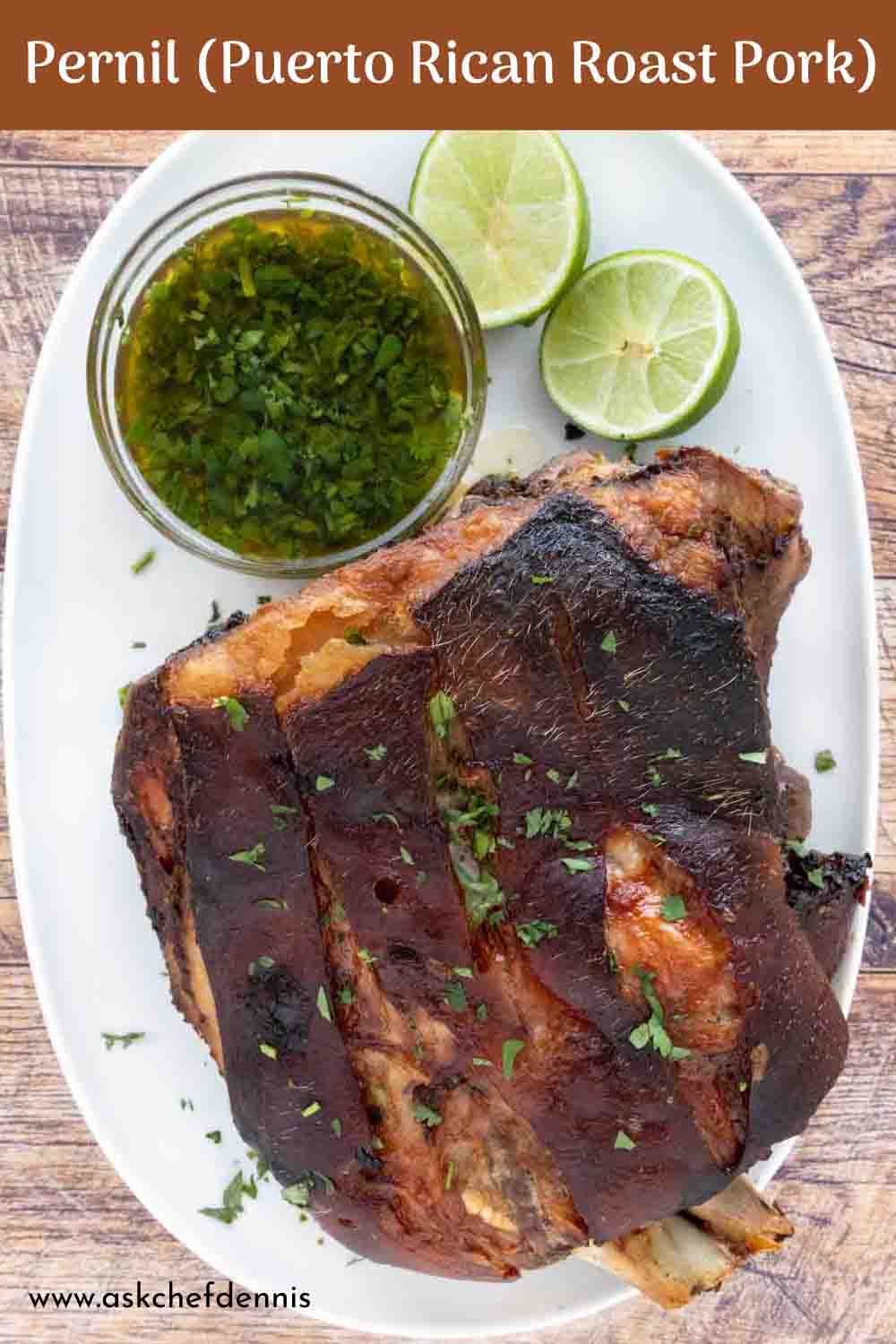
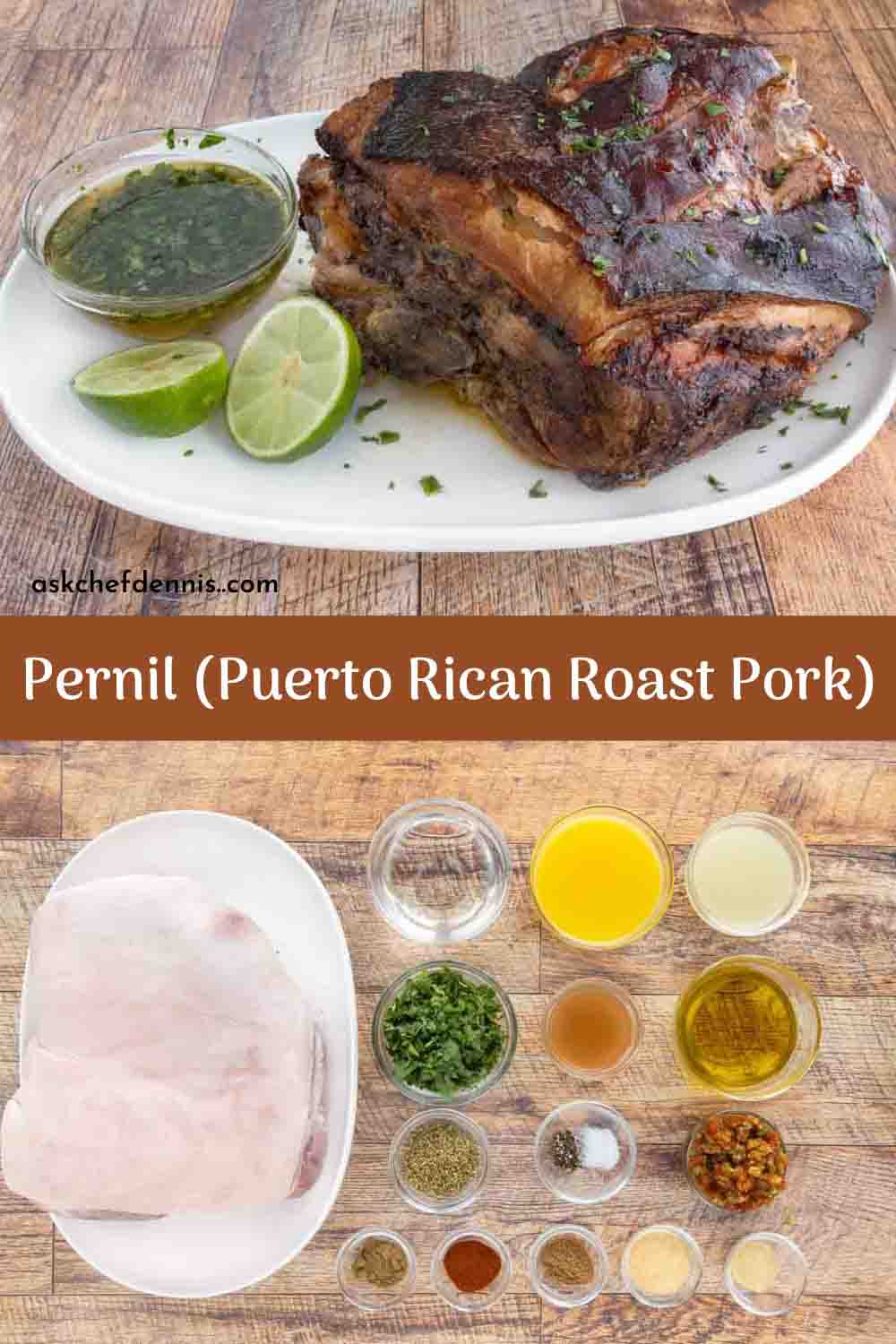
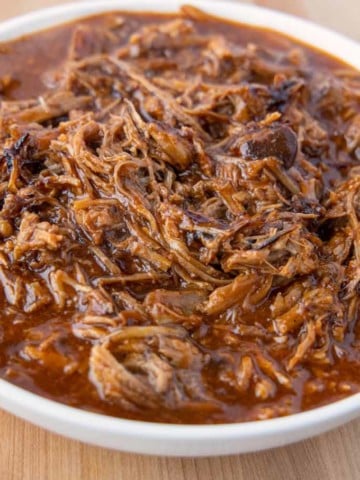
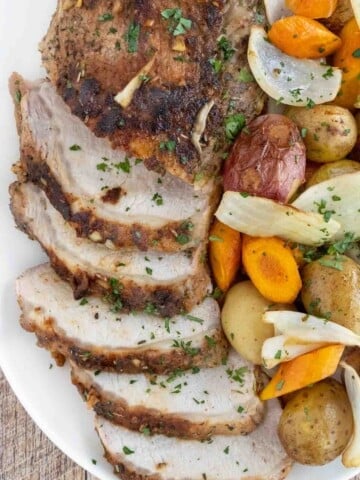
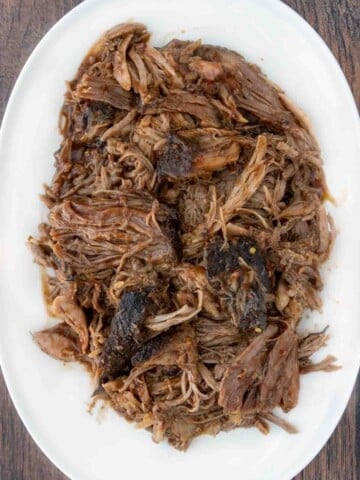
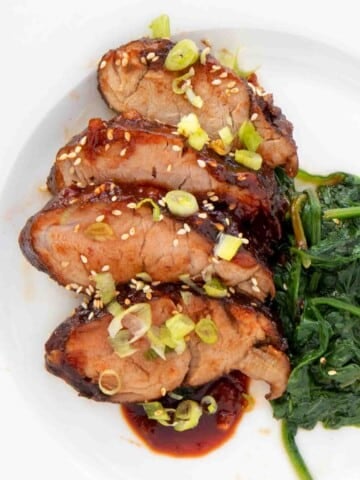

Michelle says
Chef D,
This looks amazing and I can’t wait to try it but I have an important question….should the pork sit on a rack inside the roasting pan, should I set it directly inside the pan without a rack so rests in the juices? Thank you in advance.
Chef Dennis Littley says
We made it without a rack, so the roast was resting in the juices, but you can definitely place it on a rack. That way the air will circulate all around the pork.
Adrienne says
This is delicious. Reminds me of an Italian Porketta. Thank you, Chef.
Chef Dennis Littley says
You’re welcome, and I’m happy to hear you enjoyed the pork!
Zabanga says
Perfect.